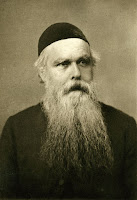 |
| drawing titled “Death’s Dispensary” |
Historians of science, however, point to many distortions in such a depiction. Just to start with, people in the London neighborhood knew of many individuals who had drunk from the Broad Street pump but had not become ill. Also, the statistics about cholera victims that John Snow gathered did not point like unquestionable evidence to that pump. There were many anomalies. Some families farther from that pump and near sources of clean water had still died. And other people who worked at a brewery one block from the Broad Street pump were spared. Snow had to laboriously search out explanations for each anomaly. (Such as that the brewery workers were provided malt liquor by their employers, and so drank little water.)
The myth-like depiction also misrepresents the removal of the pump handle and what happened afterward. Snow did not remove the handle himself: He got the prompt cooperation of an only initially reluctant Board of Governors. And even after its removal, the decline in cholera was not clear-cut proof because -- as Snow himself admitted -- the terrible wave of cholera had already begun to decline. Nor had Snow scientifically surveyed the survivors as a scientific control.
Also, those opponents of Snow who held to the traditional view that vapors in the air were the suspect had a decent argument. London's air was notoriously foul. A few decades earlier, the poet Percy Shelley had written that, “Hell is a city much like London,” and the city's situation was hardly better in 1854.
The contemporary writer Steven Johnson, in his fascinating book The Ghost Map, points to a perhaps even more significant distortion:
"There is a kind of mythology that stories like this one tend inevitably to drift toward:
the lone genius shaking off the chains of conventional wisdom....
[But] intellectual breakthroughs [are] rarely the isolated genius
having a eureka moment alone in the lab."
the lone genius shaking off the chains of conventional wisdom....
[But] intellectual breakthroughs [are] rarely the isolated genius
having a eureka moment alone in the lab."
In this regard, the physician John Snow stood on the shoulders of centuries of awareness that human sewage had to be sequestered and removed (as demonstrated by the sewage systems of even ancient Rome). Also, for his mapping, Snow used death statistics that were continuously compiled by the city demographer William Farr.
 |
| Henry Whitehead |
~ ~ ~
Have you known any religiously devoted people who minister to others with medical care?
(The quotation by Percy Bysshe Shelley is from “Peter Bell the Third,” 1819.)
(The Steven Johnson quotation is from The Ghost Map: The Story of London's Most Terrifying Epidemic --
and How It Changed Science, Cities, and the Modern World, © 2006, pp. 144, 149 & 181.)
(The Steven Johnson quotation is from The Ghost Map: The Story of London's Most Terrifying Epidemic --
and How It Changed Science, Cities, and the Modern World, © 2006, pp. 144, 149 & 181.)
1 comment:
I know many people who work in the medical profession and who are also religious, but I had never before thought about putting two and two together to think about how their dedication to the medical profession and their devotion to God's love might overlap. Thanks for making me think about that.
Post a Comment